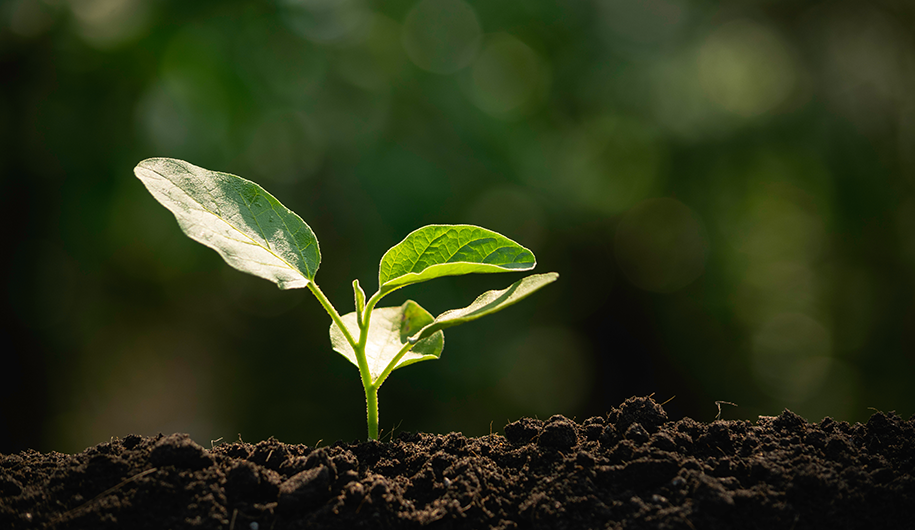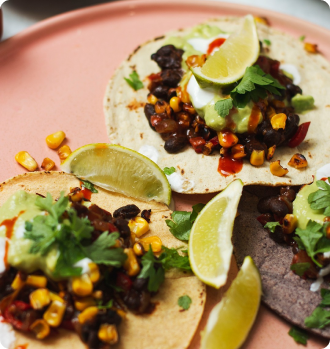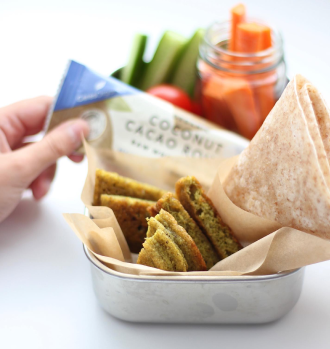
Climate change. These two words have been brought up in conversations from time to time in the past few years, but more recently, has been the hot topic of interest. We’ve seen our country take a stand by banning single-use plastic bags and more awareness around sustainability. This is the right step forward, but it still doesn’t address the impending soil degradation that is happening around the world. Topsoil is incredibly important to all of us, it’s the foundation to growing plants to feed people and animals. Slowly, we’re starting to see the effects of conventional farming catching up with us. From polluted waterways due to chemical runoffs to a decline in fertile soil year on year. It takes 1000 years to generate three centimeters of top soil, and at the current rate of degradation , our top soil could be gone in less than 60 years.
So what is top soil, why is it so important to us?
Soil isn’t just dirt, it’s a whole other system of microorganisms, organisms and complex processes that magically change elements into nutrients to grow plants. The chart below shows the different layers in our soil; plants need humus and topsoil to grow. Humus is a dark, organic material that lies on top of soil in the form of decayed plant and animal matter. This provides the nutrients our top soil
It is estimated that the world grows 95% of it’s food in topsoil, so it’s a crucial component to our food system.
The Causes of Soil Degradation
Deforestation
Take Sarigua National Park in Panama for example, the consequence of deforestation. Today, it is a ‘desert’. Once it was a lush coastal forest with thriving mangroves but had been chopped down to make space for agriculture. With land cleared for agricultural plants such as wheat, coffee and cotton, these plants can’t hold onto the soil as well as trees – worsening soil erosion. The cycle is never ending: land loses fertile soil, farmers move to a new land to clear forests and it keeps going.
Overgrazing
Soil erosion due to overgrazing leading to desertification caused by over exploitation[/caption]
Overgrazing is simply when animals extensively grazes the land without allowing time for the grass to recover. This causes a reduction to plant cover, and over time a loss of topsoil. Plant cover also protects the soil from winds and rain and provides a home for microorganisms.
Chemicals
Chemicals have helped farmers increase crop yield to feed an ever-growing population. A study conducted in 1978 for 21 years comparing soil health between conventional and organic farming showed a loss of soil organic matter over time, with organic farming using manure from animals to fertilise the soil.
What’s the impact if we continue?
Flooding
We are seeing increasing flooding due to deforestation/soil erosion. Without trees and plant life, the land is less able to soak up water. As a result, flooding is more common,
Waterways
Without plant matter, soil and chemicals will wash into our streams and waterways. Sedimentation and chemical runoffs will harm animals that depend on freshwater such as marine wildlife and local communities.
Barren lands
Soil erosion will cause a loss of fertile soil turning lush farmland into barren lands.
So how does Organic Agriculture come into this?
Climate change is real. While we are searching of different ways to maintain a sustainable way of living, we need to completely rethink the way we do things. There are constant debates of organic vs conventional around if it’s better for your health. We need to put these aside and look at the evidence of what conventional farming is doing to our planet. You can argue going plant-based is the answer to solving our crises to reduce carbon emissions, but it will not solve our soil erosion problem if chemicals will be used to grow plants for our consumption. An organic farm with a good crop rotation plan and an integrated animal farming provides a healthy farming cycle as seen below:
As beautifully put by the International Federation of Organic Agriculture Movement, organic agriculture doesn’t focus on crops, but for all entities involved in the process.
Our own Ministry of Primary Industries (MPI) defined ‘Organic” as ‘Organic agriculture is based on minimising the use of external inputs. For example, avoiding or excluding the use of synthetic fertilisers and pesticides, antibiotics, growth promotants, genetic modification, and irradiation. Organic handlers, processors, and retailers follow voluntary standards to maintain the integrity of organically produced products.’ But it is much more than just chemicals in our food.
We pride on working with reputable farmers to bring you genuinely certified organic products – so we’ve chosen to work with BioGro to certify all our products. BioGro audits every step of the process from traceability, animal welfare, climate change, biodiversity, packaging, care for workers, health & wellbeing & advertising!
A study conducted in New Zealand comparing soil quality concluded there was evidence that organic farming improved soil biological properties.
So what is involved in organic farming practices?
Farming is no easy task, but below are some of the methods organic farmers use:
Cover Crops
These are plants that help improve the soil and planted in fields in between growing seasons. This helps protect the soil from erosion and nutrient deficiency. Since a farmer has grown crops that have depleted the soil off nutrients, it needs to replenish. It helps to stop weeds growing and increases biodiversity. May as well put the bare land to good use!
Crop Rotation
Farmers plant different crops on the same plot to improve soil health. For example, if you keep planting corn, corn absorbs of a lot of nitrogen and the soil will be depleted by nitrogen. By planting a different crop such as beans, it will return nitrogen back to the soil.
Composting
Compost is an extremely sustainable way to reduce waste and create fertilizer. It breaks down food scraps and plant matter and organic farmers rely on this to fertilise the land.
Natural Pest management
We need good bugs to keep the bad bugs away. Farmers focus on creating healthy soil to create strong plants that will naturally put up a fight to pests. Rotating crops is another method as well as use of pheromones to disrupt pest mating cycles.
Livestock management
Good animal husbandry can assist with weed management and improve soil by fertilising with manure.
Rotational grazing
This is the practice of moving animals to different pastures to improve soil, plant and animal health. Each pasture is grazed one at a time then rotated in order to let the pasture rest and regenerate.
Organic No Till
Traditionally tilling is breakup the soil and turning it over to make way for the new planting season. While it loosens the soil to make it easier for planting and eliminating weeds, it can contribute to soil erosion.
We hope you’ve learned a little bit about organic farming and that it’s the whole package rather than just the food! We believe in regenerative organic farming is the next step forward to combating climate change and sustainability.





